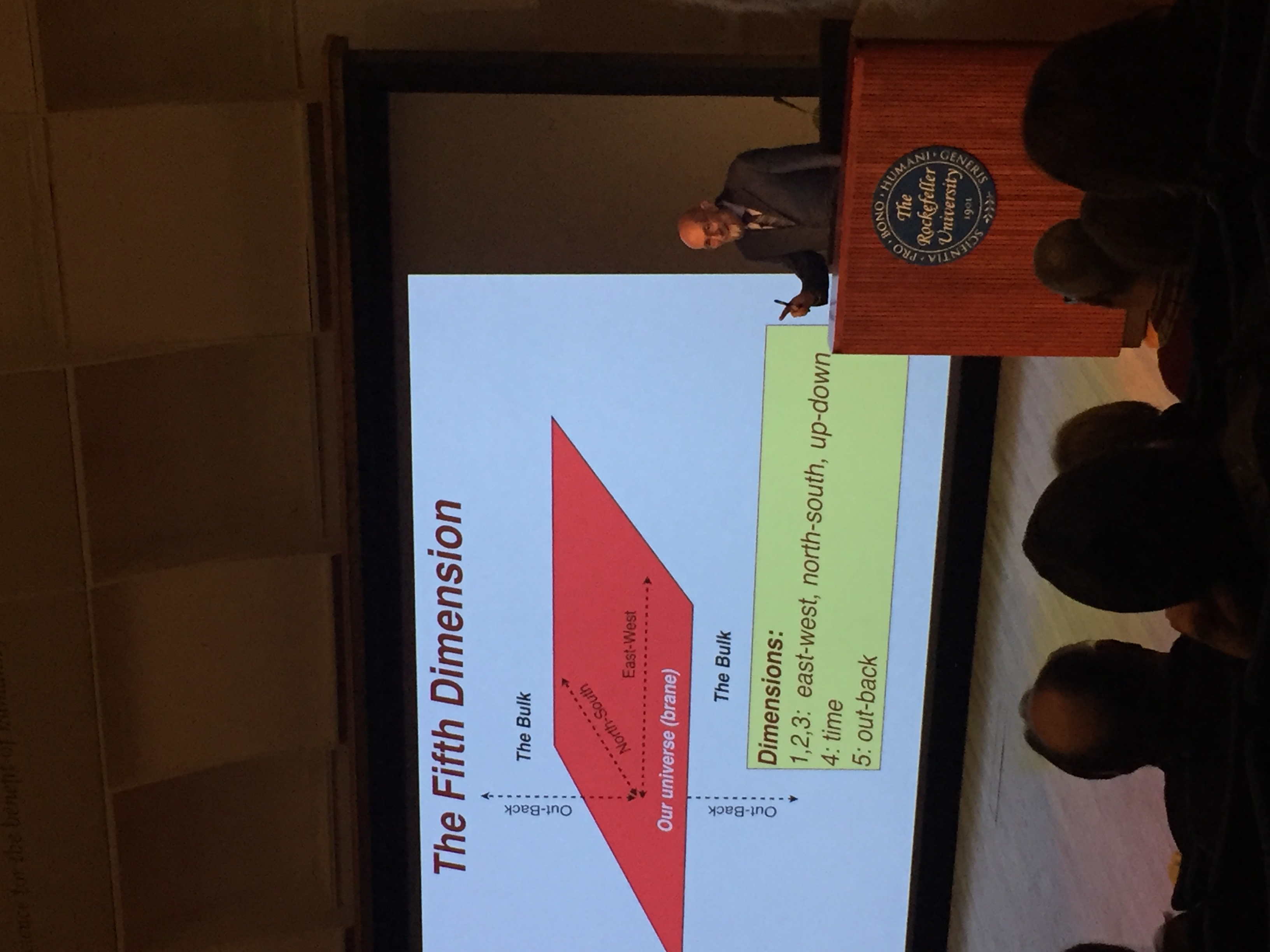Blog
Kip Thorne Wins the Lewis Thomas Prize
Sarah Baker, 22 April 2018
On Tuesday, April 18, 2018, theoretical physicist Kip Thorne received the Lewis Thomas Prize for Writing About Science, an award presented by the Rockefeller University to "the rare individual who bridges the worlds of science and the humanities.” Prior to the ceremony and lecture for this prize, the Science Communication and Media team had a chance to sit down with Dr. Thorne for tea and a discussion about his career.
Thorne received the Nobel Prize in Physics in 2017 for his theoretical work that led to the first proof of gravitational waves which were detected using the Laser Interferometer Gravitational-Wave Observatory (LIGO) project. This was certainly no easy feat, costing taxpayers $1.1 billion, requiring work from over 1,000 scientists, and taking 50 years from first coming up with the idea of using laser interferometry to detect gravitational waves until they were finally detected using this technology in September 2015. Einstein had predicted the existence of gravitational waves about 100 years earlier with his theory of relativity and this detection finally proved their existence. The gravitational waves that were detected came from the merging of two black holes into one larger black hole 1.3 billion light years away which caused ripples in the spacetime fabric. This discovery has opened up the field of gravitational wave astronomy and allowed for astrophysicists to better understand events leading to warped spacetime in our universe.
Thorne was honored with the Lewis Thomas Prize for his 1994 book, Black Holes and Time Warps: Einstein's Outrageous Legacy, a book which attempted to explain theories about many of the bizarre phenomena in our universe in a way that a public audience could understand. Thorne explained that he wanted to write this book because when he was thirteen years old, he came across a book by astrophysicist George Gamow, One, Two, Three…Infinity and read it three times before deciding to become an astrophysicist himself. Prior to that, growing up in Utah, he had wanted to be a snow plow driver because it felt like the most powerful profession in the world. But the words of another scientist inspired him when they described the universe to him in a way he felt he could understand. So when Thorne became a prominent scientist himself, in fact going directly from a post-doctoral position to a tenured faculty position at the California Institute of Technology, he decided that he would channel his inner-Gamow and try to communicate science to a broader audience.
Thorne’s science communication efforts did not stop there. He is most recently known for his work on the hit film Interstellar, the story of astronauts that travel through a wormhole to try to discover a new planet for humanity to live on after earth becomes uninhabitable in a dystopian future. During his Lewis Thomas Prize lecture, Thorne gave a detailed history of his work on this movie. It all began when Carl Sagan set him up on a blind date with producer Lynda Obst. While they did not work out romantically, they became good friends and Obst asked Thorne to work with her to write a treatment, or the first draft conceiving a movie idea, based on scientific principles underlying his work. Jonathan Nolan was hired to write the screenplay for the movie, while Steven Spielberg signed on as director. Ultimately Spielberg left to focus on the movie Lincoln instead, and Christopher Nolan, Jonathan’s brother, became the final director of the film. While the story changed drastically throughout the eight years between the original treatment and final film, the scientific principles behind the film were left to be as accurate as possible under Thorne’s guidance. Thorne wrote a book entitled The Science of Interstellar in 2014 where he describes in detail all of the real science that goes into the stunning visual effects and principles of space, time, and gravity in the movie.
Currently, Thorne is delving into a new medium for public outreach – a scientific concert series. Thorne is working with Hans Zimmer and Paul Franklin, who scored and did the visual effects for Interstellar, respectively, to provide audiences with a visual and musical representation of gravitational waves moving through the universe. Computer simulations of mathematical simulations are being used to show black holes colliding, the creation of the universe, and much more, with stunning visual displays, all set to music by Zimmer. Although these concepts are difficult to understand, this series is aimed at helping people comprehend and appreciate these marvels of our universe. Two performances have been completed so far, one in Orlando and the other in Tenerife, with more planned for the future.
Perhaps the most intriguing aspect of Thorne’s life is the fact that not only is he an incredible theoretical physicist who has helped us uncover and actually observe some of the most difficult wonders of the universe, but that he is also passionate about bringing these discoveries to the public through a variety of media. He has reached the public through his writing, and also film, music, and visual displays to allow complex physics concepts to be realized in a way that the human senses can understand. Thorne believes that every scientist should want his or her own work to be understood by others in order to make the most impact and he has made an exciting career out of doing just that.

